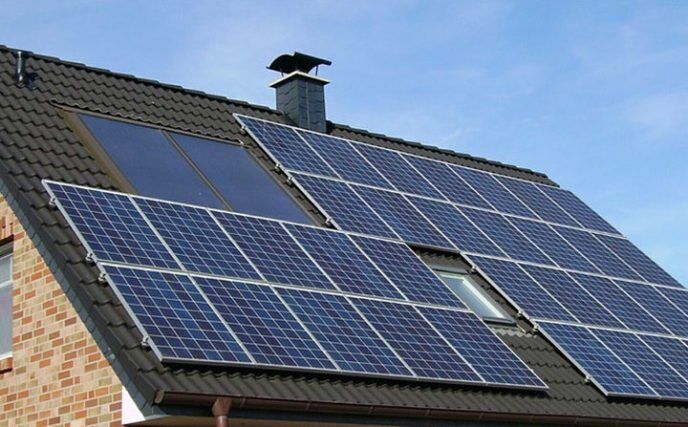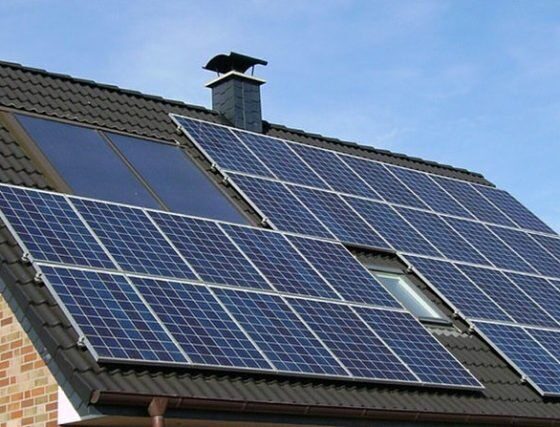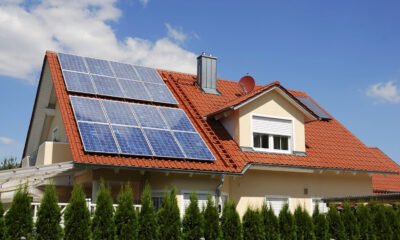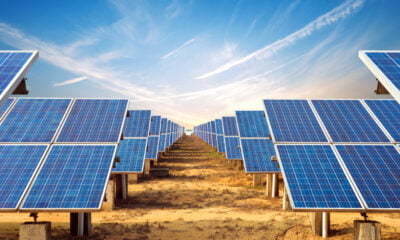

Energy
Top tips on selling a house with an existing solar PV installation
If you have photovoltaic solar panels fitted to the roof of your house and are getting regular Feed-In Tariff (FIT) payments, you may be wondering how to deal with this when you put your house on the market.
Here, Mike James – an independent property writer working with Peter Barry Estate Agents, provides his top tips for selling a house with an existing solar PV installation.
How will solar PV affect the value of my house?
The good news is that your home is virtually guaranteed to have gone up in value as a result of the solar investment you put into it.
Solar PV panels can add value to your property in 3 ways:
- As you’ve no doubt experienced yourself, your energy bills are lower as a direct result of using solar power. This is clearly an attractive proposition to home buyers. According to a recent study, 1/3 of UK buyers would be happy to pay more for a house with a solar PV installation if it means they can benefit from lower electricity bills, particularly in view of the current steep rise in traditional energy prices.
- Then there’s the government backed Feed-in-Tariff (FIT), the regular income you are getting for selling a proportion of the solar energy generated on your roof to the National Grid. The rate of return you will be getting depends on when your panels were installed, and rates have changed drastically since the scheme’s launch in 2011. If you decide to sell your home within 20 years of the solar PV installation, the FIT payments will pass onto the new homeowner – essentially free income that will push up the value of your home to any potential buyer.
- What’s more, your solar installation is also likely to affect your home’s EPC (Energy Performance Certificate) grade, now a requirement for every UK home being sold. Solar panels have been known to raise the EPC rating by at least 2 grades, and this is reflected in an uplift in the value.
When is the best time to sell a home with solar PV?
When it comes to selling a house with an existing solar PV installation, there are several factors to consider:
The ‘younger’ your solar installation when you sell your home, the more appealing it will be to potential buyers. For one thing, the panels themselves will have many years of warranty left on them, bringing extra peace of mind. More importantly perhaps, the FIT scheme itself will have longer left to run (up to 20 years maximum, depending on the exact tariff), meaning more ‘free’ payments for the next owner.
On the downside, however, selling your home too soon after fitting solar PV panels means that you may lose out on the return from your initial investment. Depending on the original cost of your solar PV installation and the FIT rate applicable at the time of commissioning, you should normally expect to earn the initial payout back in FIT payments and energy saving in around 7-8 years.
FIT rates have been reduced substantially since the launch of the scheme 5 years ago. The latest official regulations can be viewed here while current FIT rates are detailed here. The table below shows the digression dates when rates were changed by the Government up to 2015.
| Digression Date for Solar PV | Feed-in tariff rate (pence / kWh) |
| 01-Aug-11 | 43.30 |
| 01-Apr-12 | 21.00 |
| 01-Aug-12 | 16.00 |
| 01-Nov-12 | 15.44 |
| 01-Jul-13 | 14.90 |
| 01-Apr-14 | 14.38 |
| 01-Jan-15 | 13.88 |
| 01-Apr-15 | 13.39 |
| 01-Jul-15 | 12.92 |
| 01-Oct-15 | 12.47 |
In order to balance both the return on your solar investment as well as the maximum sale value of your property, it makes most sense to sell your home within, say, 8-15 years of the date of your solar PV installation. If you wait until the end of the FIT contract, your property will still be attractive to buyers due to its increased energy efficiency and lower utility bills. And as long as all the solar system components themselves are of good quality and in good condition, or possibly still under warranty, there should be no problem.
Top tips for selling a house with solar PV panels
Having considered the above issues carefully, you may now be ready to put your property on the market. If you’re ready to proceed, make sure you are fully prepared to take advantage of the added value that solar panels bring to your house for sale:
- Double check that your solar installation is in perfect working order.
- Have all the paperwork and official documentation for your installation readily available. This includes receipts from your accredited installer, the Microgeneration Certificate (MCS), any solar product warranties, FIT contract and payments you have received.
- Provide evidence to show the impact of solar power on your energy bills, perhaps by showing actual electricity bills before and after the installation.
- Find an estate agents who understands the value of solar PV, so that the asking price accurately reflects the added value and effective marketing can take place.


 Environment10 months ago
Environment10 months agoAre Polymer Banknotes: an Eco-Friendly Trend or a Groundswell?

 Environment12 months ago
Environment12 months agoEco-Friendly Home Improvements: Top 7 Upgrades for 2025

 Features9 months ago
Features9 months agoEco-Friendly Cryptocurrencies: Sustainable Investment Choices

 Features10 months ago
Features10 months agoEco-Friendly Crypto Traders Must Find the Right Exchange




























